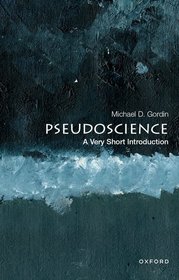
- Publisher's listprice GBP 9.99
-
4 772 Ft (4 545 Ft + 5% VAT)
The price is estimated because at the time of ordering we do not know what conversion rates will apply to HUF / product currency when the book arrives. In case HUF is weaker, the price increases slightly, in case HUF is stronger, the price goes lower slightly.
- Discount 10% (cc. 477 Ft off)
- Discounted price 4 295 Ft (4 091 Ft + 5% VAT)
Subcribe now and take benefit of a favourable price.
Subscribe
4 772 Ft

Availability
Estimated delivery time: In stock at the publisher, but not at Prospero's office. Delivery time approx. 3-5 weeks.
Not in stock at Prospero.
Why don't you give exact delivery time?
Delivery time is estimated on our previous experiences. We give estimations only, because we order from outside Hungary, and the delivery time mainly depends on how quickly the publisher supplies the book. Faster or slower deliveries both happen, but we do our best to supply as quickly as possible.
Product details:
- Publisher OUP USA
- Date of Publication 27 April 2023
- ISBN 9780190944421
- Binding Paperback
- No. of pages144 pages
- Size 175x116x9 mm
- Weight 127 g
- Language English
- Illustrations 10 b&w illustrations 2107
Categories
Short description:
Many people would be able to agree on a list of things that fall under the umbrella of pseudoscience - astrology, phrenology, UFOlogy, creationism, and eugenics might come to mind. But defining what makes these fields "pseudo" and differentiates them from genuine science is a far more complex issue. Pseudoscience: A Very Short Introduction explores the philosophical and historical attempts to address this problem of demarcation. Michael D. Gordin guides readers along a bewildering array of marginalized doctrines, focusing on some of the central debates about what science is and is not, and how such controversies have shifted over the centuries. This Very Short Introduction provides a historical tour through various theories, providing readers with the tools to think deeply about scientific controversies both past and present.
MoreLong description:
Everyone has heard of the term "pseudoscience," typically used to describe something that looks like science, but is somehow false, misleading, or unproven. Many would be able to agree on a list of things that fall under its umbrella - astrology, phrenology, UFOlogy, creationism, and eugenics might come to mind. But defining what makes these fields ?pseudo? is a far more complex issue. It has proved impossible to come up with a simple criterion that enables us to differentiate pseudoscience from genuine science. Given the virulence of contemporary disputes over the denial of climate change and anti-vaccination movements - both of which display allegations of ?pseudoscience? on all sides - there is a clear need to better understand issues of scientific demarcation.
Pseudoscience: A Very Short Introduction explores the philosophical and historical attempts to address this problem of demarcation. This book argues that by understanding doctrines that are often seen as antithetical to science, we can learn a great deal about how science operated in the past and does today. This exploration raises several questions: How does a doctrine become demonized as pseudoscientific? Who has the authority to make these pronouncements? How is the status of science shaped by political or cultural contexts? How does pseudoscience differ from scientific fraud?
Michael D. Gordin both answers these questions and guides readers along a bewildering array of marginalized doctrines, looking at parapsychology (ESP), Lysenkoism, scientific racism, and alchemy, among others, to better understand the struggle to define what science is and is not, and how the controversies have shifted over the centuries. Pseudoscience: A Very Short Introduction provides a historical tour through many of these fringe fields in order to provide tools to think deeply about scientific controversies both in the past and in our present.
The book excels as an introduction to the topic....It has the potential to appeal to a wider audience... and help readers within and beyond academia to conceptualize and engage with pseudoscience in its full complexity-to think about it beyond the abstract, the moralistic, and the anecdotal. That indeed would be an exceptional achievement.
Table of Contents:
The book excels as an introduction to the topic....It has the potential to appeal to a wider audience... and help readers within and beyond academia to conceptualize and engage with pseudoscience in its full complexity-to think about it beyond the abstract, the moralistic, and the anecdotal. That indeed would be an exceptional achievement.
More



